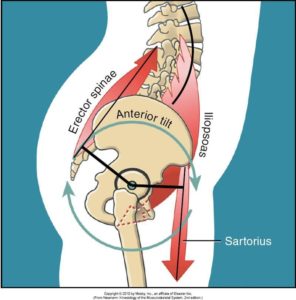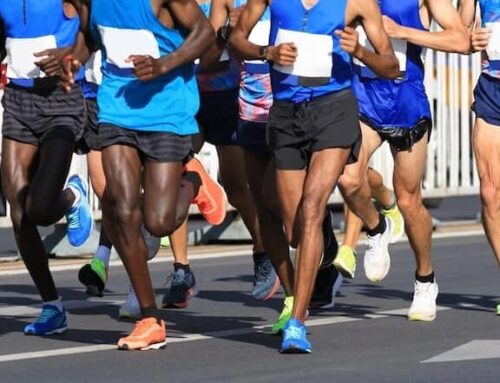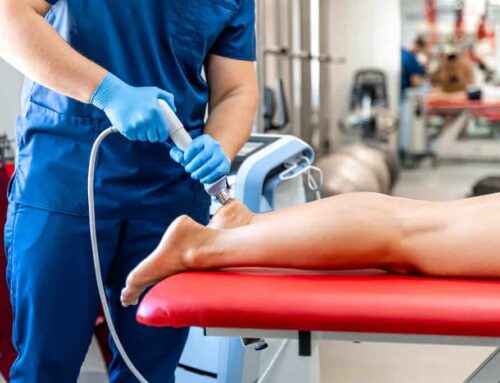Have you ever noticed your back muscles tightening up while running, or even feeling painful and stiff after your run? Believe it or not, this is often not a back problem – it’s a hip one.
Each time a foot lands while running, there are forces transmitted up through the leg to the pelvis and low back. As a result, the muscles and joints of the low back are susceptible to excessive forces if the hip is not functioning optimally.
Typically, low back pain during or after running is caused by one or both of the following hip issues: muscle weakness and decreased mobility.
HIP MUSCLE WEAKNESS
When hip muscles lack strength, they cannot properly control hip motion. This can lead to something called ‘pelvic drop’, where one side of the pelvis tips downward. When this drop occurs over and over, it can lead to compression of the joints on one side of the back, and tension in the muscles on the other side of the back. Both of these things can cause low back pain!
Level pelvis Pelvic drop
The following 2 exercises are great additions to your warm-up or cool-down routine to improve hip muscle strength. For more, check out these additional exercises specifically for improving low back pain through core strengthening.
Side bridge to neutral: Do 12-15 repetitions per side, 2-3 times each. If that’s too easy, repeat the motion for 45-60 seconds per side, 2-3 times each.
Single leg squat: Try for 2-3 sets of 8-10 repetitions per leg, making sure you maintain good mechanics.
DECREASED HIP MOBILITY
When the hip lacks mobility, it is difficult to get the leg behind the body – a motion that is necessary for healthy running. To compensate for this, the pelvis will tilt and the low back will arch. This can cause compression of joints and feelings of tightness in the low back muscles. In addition, the pelvis may rotate to try to get the leg behind the body, leading to more compression in the lower back.
The following stretch works well to improve hip motion by stretching the muscles in the front of the hip. We recommend performing a dynamic version as part of your warm-up and then doing a prolonged hold as part of your cool-down and throughout the day.
Controlled hip flexor stretch: Perform this slow, controlled stretch 5-6 times before a run. After your run, perform a longer stretch of 30-60 seconds, 2-3 times.
Give these a try and let us know how it goes! Happy running!
Blog image: https://www.trainingpeaks.com/blog/hal-higdons-top-10-running-tips/








